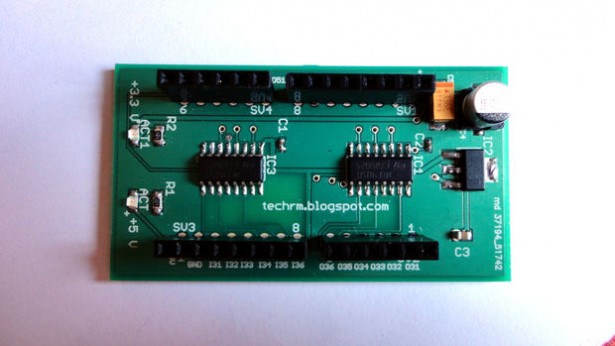Today we are going to show you our first experiment on the Internet of Things. For this purpose, we decided to use an Arduino MEGA instead of an Arduino UNO. That’s because Arduino MEGA has more than one serial port and this fact allows us to use the ESP8266 and the serial monitor at the same time.
As written in the title, we’ll see how to monitor some of the most important plant growth factors*. These parameters are:
- Ambient temperature and humidity
- Soil moisture and temperature
- Illuminance
Monitoring this parameters occurs via Internet thanks to the famous and cheap ESP8266 v01 wifi module.
Techrm’s channel is available here. If you are lucky, you’ll see it working.
As usual, let’s list what we need to follow the tutorial:
- Arduino MEGA 2560
- USB cable
- DHT22 (more info about this sensor)
- ESP8266 v01
- Bi-directional logic level translator (we use our own by TechRM)
- LD-33V voltage regulator (3,3V-1A)
- Waterproof thermistor
- YL-69 Analogue soil moisture sensor
- Photoresistor
- Set of Dupont cables
- Breadboard MB-102
- Number 3 10k Ohm Resistors
NOTE: The ESP8266 wifi module works on 3.3V power supply but the Arduino serial ports work on 5V. That’s why using a logic level translator between the ESP8266 and the wifi module is required. We have used our own logical level translator which has been very efficient on testing but you can use another one, for example: SparkFun Logic Level Converter – Bi-Directional
We built a limited number of them and anyone interested on purchasing our devices can find them on Tindie. We’ll be thankful for feedback.
Another essential thing is the voltage regulator. Since the ESP8266 requires more than the 35mA supplied by the Arduino 3.3V source, you have to connect the 5V to the voltage regulator and take advantage of the larger amount of Ampere supplied by this power source.
*Even if we are going to explain how to monitor those parameters, following our explanation you’ll be able to change sensors and monitor whatever you want.
For more detail: WIFI plant monitoring system based on Arduino MEGA and ESP8266

